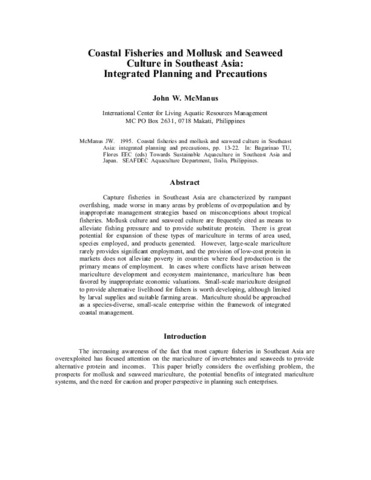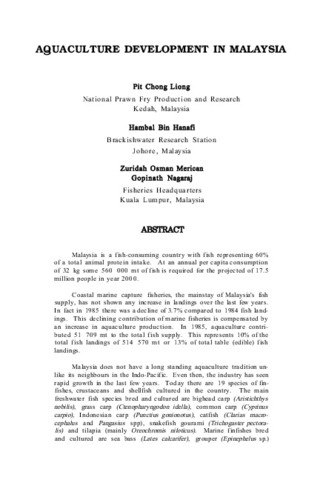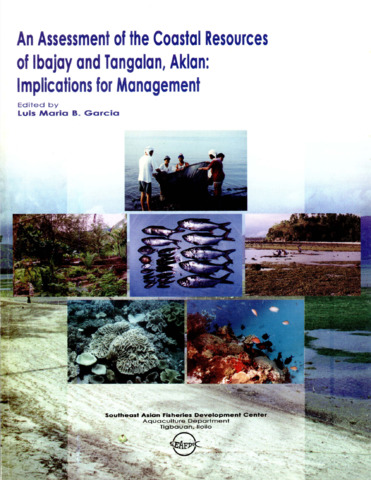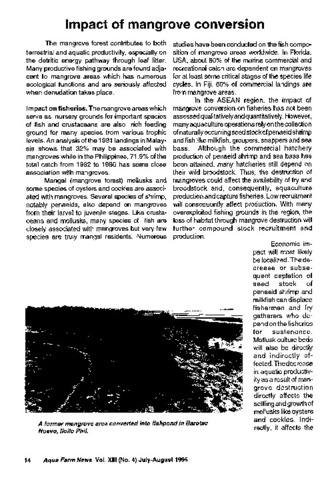Coastal fisheries and mollusk and seaweed culture in Southeast Asia: Integrated planning and precautions
- Global styles
- MLA
- Vancouver
- Elsevier - Harvard
- APA
- Help

Date
1995Author
Page views
9,747ASFA keyword
fishery economics 
small-scale aquaculture
resource management
sociology
integrated coastal zone management
carrying capacity
environmental impact
overfishing
mollusc culture
aquaculture
catch/effort
sustainability
aquaculture economics
fishery policies
socioeconomic aspects
aquaculture development
natural resources
marine molluscs
culture effects
coastal fisheries
mariculture
seaweed culture
fish culture

small-scale aquaculture

resource management

sociology

integrated coastal zone management

carrying capacity

environmental impact

overfishing

mollusc culture

aquaculture

catch/effort

sustainability

aquaculture economics

fishery policies

socioeconomic aspects

aquaculture development

natural resources

marine molluscs

culture effects

coastal fisheries

mariculture

seaweed culture

fish culture

AGROVOC keyword
Metadata
Show full item record
Share
Abstract
Capture fisheries in Southeast Asia are characterized by rampant overfishing, made worse in many areas by problems of overpopulation and by inappropriate management strategies based on misconceptions about tropical fisheries. Mollusk culture and seaweed culture are frequently cited as means to alleviate fishing pressure and to provide substitute protein. There is great potential for expansion of these types of mariculture in terms of area used, species employed, and products generated. However, large-scale mariculture rarely provides significant employment, and the provision of low-cost protein in markets does not alleviate poverty in countries where food production is the primary means of employment. In cases where conflicts have arisen between mariculture development and ecosystem maintenance, mariculture has been favored by inappropriate economic valuations. Small-scale mariculture designed to provide alternative livelihood for fishers is worth developing, although limited by larval supplies and suitable farming areas. Mariculture should be approached as a species-diverse, small-scale enterprise within the framework of integrated coastal management.
Suggested Citation
McManus, J. W. (1995). Coastal fisheries and mollusk and seaweed culture in Southeast Asia: integrated planning and precautions. In T. U. Bagarinao & E. E. C. Flores (Eds.), Towards Sustainable Aquaculture in Southeast Asia and Japan: Proceedings of the Seminar-Workshop on Aquaculture Development in Southeast Asia, Iloilo City, Philippines, 26-28 July, 1994 (pp. 13-22). Tigbauan, Iloilo, Philippines: Aquaculture Department, Southeast Asian Fisheries Development Center.
Type
Conference paperISBN
971851127XCollections
- ADSEA '94 [21]
Related items
Showing items related by title, author, creator and subject.
-
Aquaculture development in Malaysia
Liong, Pit Chong.; Hanafi, Hambal Bin.; Merican, Zuridah Osman.; Nagaraj, Gopinath. (Aquaculture Department, Southeast Asian Fisheries Development Center, 1988)Malaysia is a fish-consuming country with fish representing 60% of a total animal protein intake. At an annual per capita consumption of 32 kg some 560 000 mt of fish is required for the projected of 17.5 million people ... -
An assessment of the coastal resources of Ibajay and Tangalan, Aklan: Implications for management
Garcia, Luis Maria B. (Aquaculture Department, Southeast Asian Fisheries Development Center, 2001)This report describes the present state of marine resources in several coastal barangays of Ibajay and Tangalan, Aklan (Philippines). Field data were obtained from rapid surveys conducted from July to September 1998. ... -
Impacts of mangrove conversion
Southeast Asian Fisheries Development Center, Aquaculture Department (Aquaculture Department, Southeast Asian Fisheries Development Center, 1995)The article presents the impact of mangrove conversion on fisheries and on coastal areas. The mangrove areas which serve as nursery grounds for important species of fish and crustaceans are also rich feeding ground for ...




